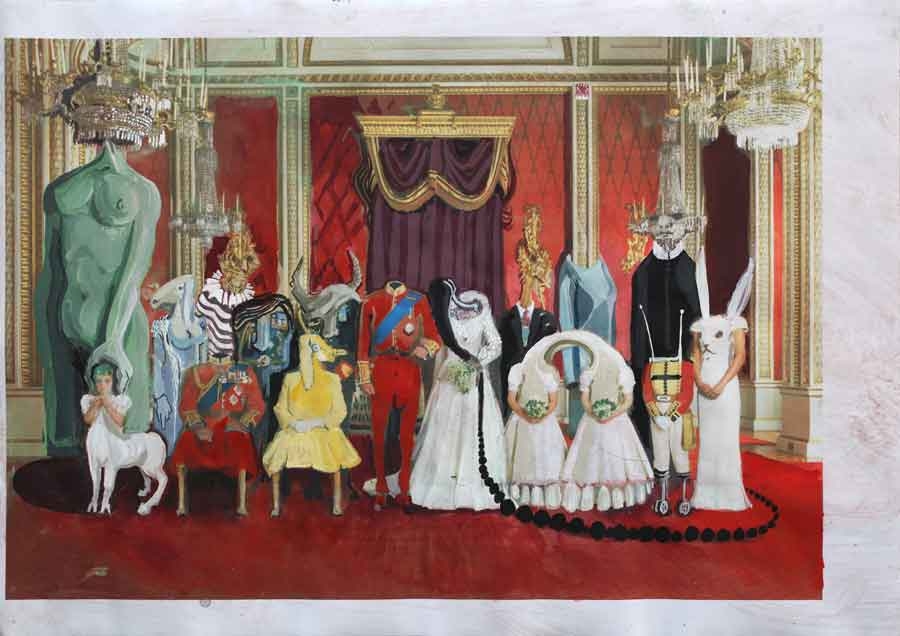For Rokni Haerizadeh, life is rendered as a series of elaborate rituals. The Dubai-based artist is perhaps best known for painterly tableaux whose subject matter draws from weddings, galas, murders, parades, funerals, riots and revolutions. His human forms – often very large and wildly expressionist – turn a crooked lens onto the madness of contemporary society.
The Fictionville series (2009–) takes as its inspiration Iranian playwright Bijan Mofid’s popular musical play Shahr-e Qesseh, or City of Tales (1968). That play’s characters are, alternately, parrots, monkeys, elephants and, of course, an ass. While Shahr-e Qesseh’s trenchant critique was rooted in prerevolutionary Iran, its resonance extends to the present day. Fictionville’s protagonists, also animal-humans, populate familiar scenes drawn from the news media – in particular images of strife from around the world. Victims, killers, bystanders, men, women, politicians, the media apparatus itself: no one is let off the hook. Large washes of watercolour are tempered by the artist’s meticulous pencilwork – what he refers to as doodling – creating a net effect of disquieting, uncomfortable beauty.
A recent animation work, Reign of Winter (2012–13) – shown at last year’s Carnegie International – takes the pomp and gaudy gaiety of the British royal wedding, starring Prince William and Kate Middleton, as its material. Crafted in meticulous stop-motion style, heads wobble and fall, arms droop, torsos assume the form of demonic heads. Herein is macabre spectacle – not unlike the spectacle of war, you might say – experienced as artistic licence. It is via the act of deliberate deformation that the work is anchored in the hand and body of the artist, and finally that the public is rendered private.
Originally published in the March 2014 FutureGreats issue, in association with EFG International
